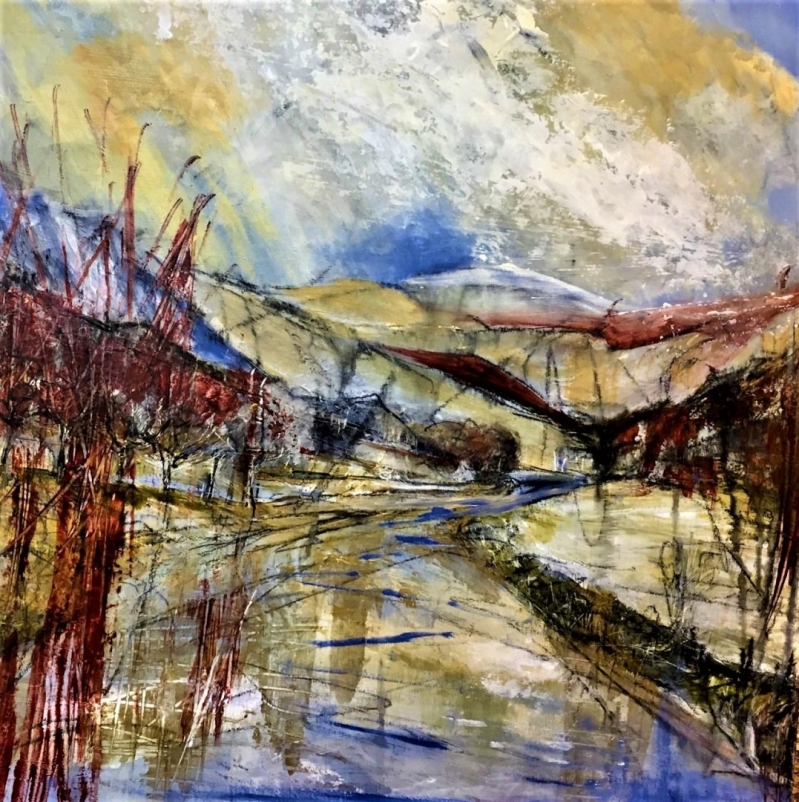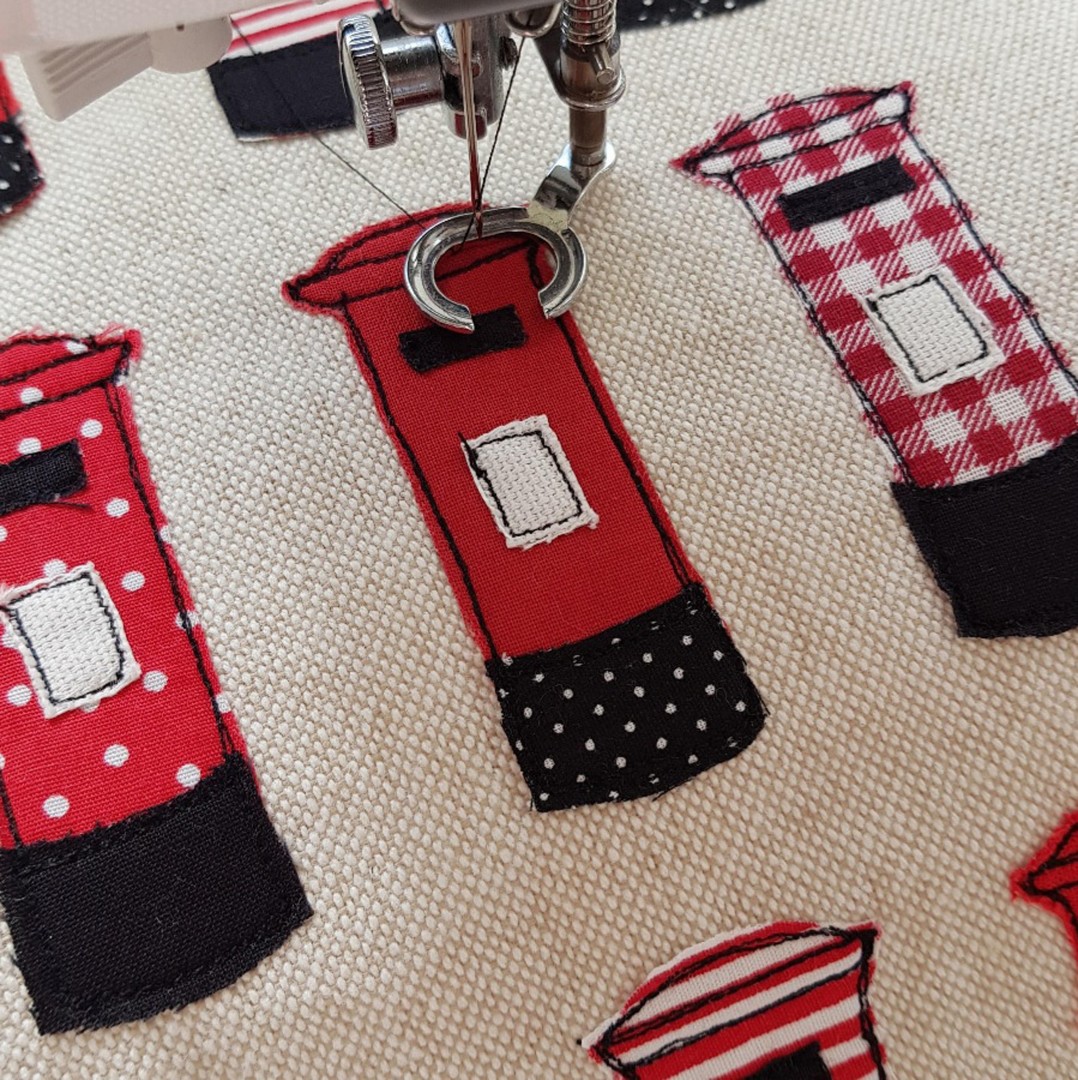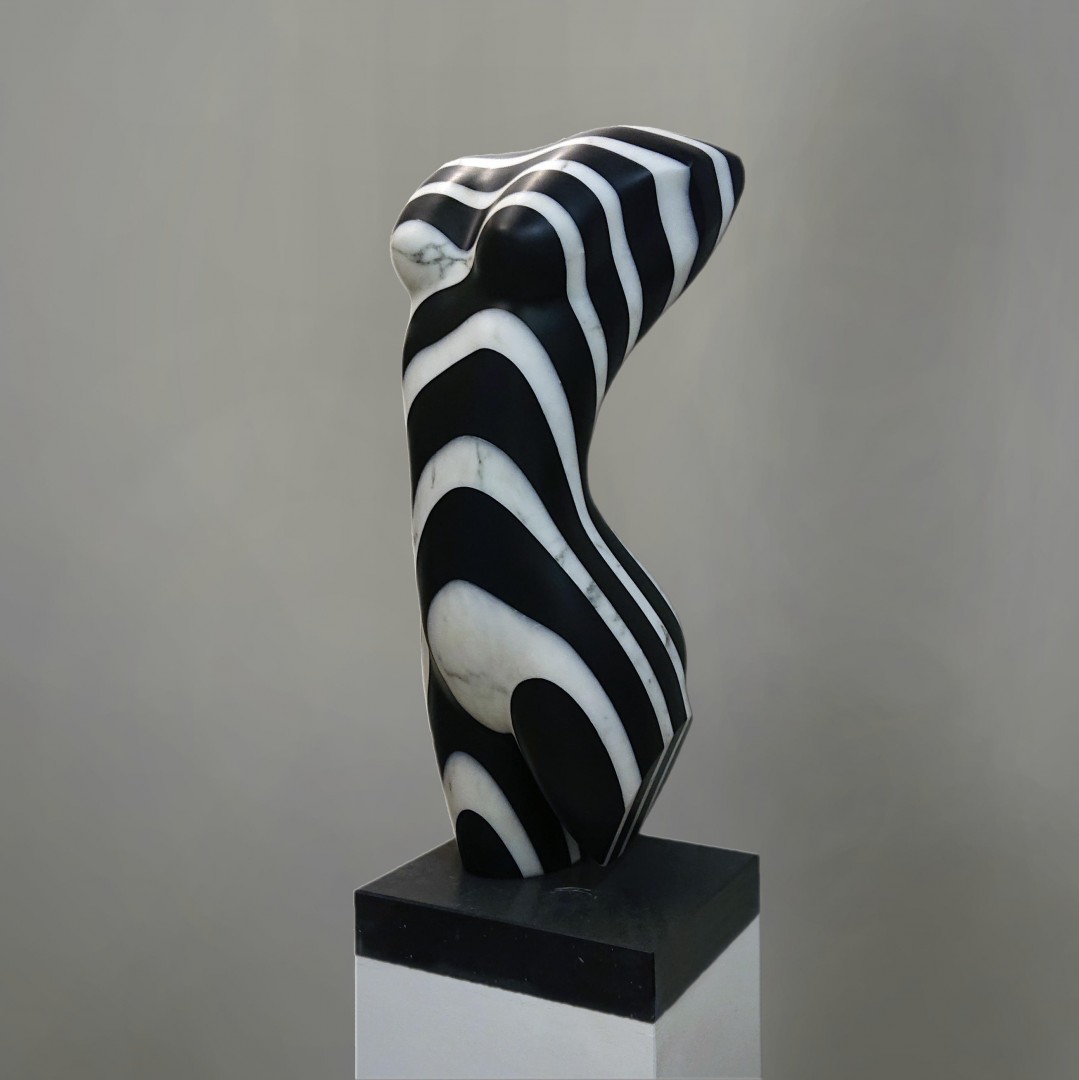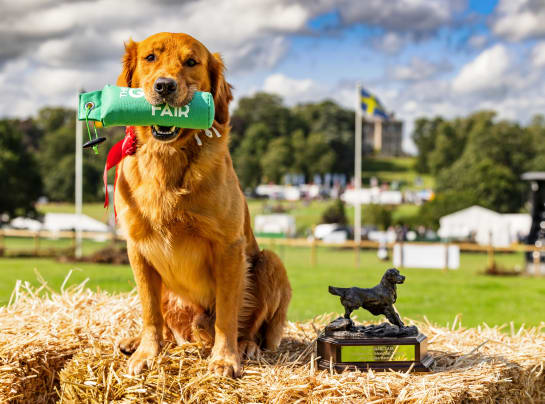For Artweeks this year, why not head to Crawley Mill? Tucked off the beaten track in this lush Cotswold valley, you can explore the art of two very different makers.
Jessica Parker’s Kingfisher Studio has an extensive frontage along the pretty stretch of the Windrush beneath the towering chimney. Named for the birds who flit right past, it’s a haven of colourful landscapes, buildings, woodland, and the coastline, painted in a loose and expressive style rich in texture and almost luminescent, evoking places with life and energy. You can imagine stepping into one and finding yourself in a Famous Five story, roaming beautiful scenes from a bygone era where there’s a perhaps touch of mystery or whimsy. She is inspired by landscape, gathering ideas when out on walks with her dog locally or from sketches gathered while on holiday.

Jessica likes to work using strong colours with bold, expressive marks and semi-realism. Her mixed-media approach using elements of collage creates texture and depth. This tendency towards abstraction gives her work mood and atmosphere.
Just across the way, meet Artweeks newcomer Meg Harris the designer-creator of the brand ‘May I Design’, the home of happy textiles. Meg makes contemporary freehand machine embroidery originals and stitched designs printed onto homeware, cards, and stationery products. They’re stylish, light-hearted, modern and a touch quirky, and it’s fascinating to see Meg at work on her designs.

Looking back, Meg says she has always dabbled in crafts. “When I was a little girl, I would buy paper plates to decorate (I think my parents thought I was mad!) and then 'sell' them (the plates not my parents),” she laughs, “from my Wendy house at the end of the garden.” This is her grown-up equivalent! Last year she launched her first product range at The British Craft and Trade Fair and was delighted to win 'Best Newcomer'. We think it was well-deserved and recommend you take the trip to Crawley Mill to see.
Artweeks sculptor Piotr Gargas is also based here: he began carving gargoyles and grotesques, tucked away in his workshop at Witney’s Crawley Mill. In architecture, a gargoyle is created with a spout to carry rainwater away from the building’s masonry, whilst a grotesque is a mythical figure for decorative purposes, but the term gargoyle is popularly used for both beasts with spouts and otherwise.
Look up at the skyline as you stroll through Oxford and your eyes will meet those of stone carvings gurning and grimacing back at you, adding humour and character to a city known for academic study. Some of these frivolous faces and fantastical creatures have overlooked the streets for many years but a surprising number are twenty-first century.

Having studied architectural masonry in Poland, Piotr has carved gargoyles for buildings all over Europe, but on moving to Oxford ten years ago fell in love instantly. ‘I came for two years originally,’ he says, ‘to be one of a team of six restoring the masonry along the top of Exeter College Chapel and discovered that Oxford is a dream city for someone in my profession. The architecture is incredibly beautiful and it’s wonderful to think that the gargoyles and grotesques that I am carving, creatures from my imagination, will outlive everyone on the planet. It’s amazing to have the chance to leave a little bit of legacy like that in such a place.’
When restoring pieces, because there’s no record of its former, Piotr often enjoyed a creative freedom in his work. ‘We knew from what was left that one of the grotesques on Exeter’s Chapel had started life as a curled winged beast but so I carved a jaguar with wings. I love the variety of grotesques.’ And peering from the top of the chapel now, you can spot beaks and beards, devils’ horns and webbed claws, cloven feet and sharp canines that could have come straight out of a magical bestiary. My daughters are very proud that their Dad makes the monsters from their favourite stories.’
‘I carve straight into the stone so people ask what happens if you make a mistake but when there’s no exact plan for a beast, you can usually work it into the final look,’ he grins.’ Of course, that only works for imaginary beasts, and I carve animals – like the elephant over the new gate at Harris Manchester College - flowers and people too.’
One carving I did for a private client was of a man with curly hair and the family who lived in the house gave me a photo to base it on. Because I always try to add signature attributes to people – a scroll and a quill for a Professor for example – I asked who he was and it turned out he was one of the builders on the project, whom they’d got along with very well and become a friend. I made him hold a hammer and he really left his mark on the building!
‘When my family come to visit, I give them a guided tour of Oxford including the creatures I’ve carved: I’m so proud to be contributing these wonderful buildings. It is terrific to see people taking pictures of buildings, like the spires on the roof of the Bodleian Divinity School and knowing the beasts I have carved are in those photos.
Stone carving is normally anonymous and so it was a big step for him to take part in his first Artweeks four years ago. Since then, Piotr has been increasingly producing sculpture in his own style rather than of Oxford’s heritage and you can see a selection in Burford Garden Company’s new sculpture garden this Artweeks. Expect sleek lines and striking black and white stripes, a world away from the red brick of Crawley Mill and the roofs of Oxford.








